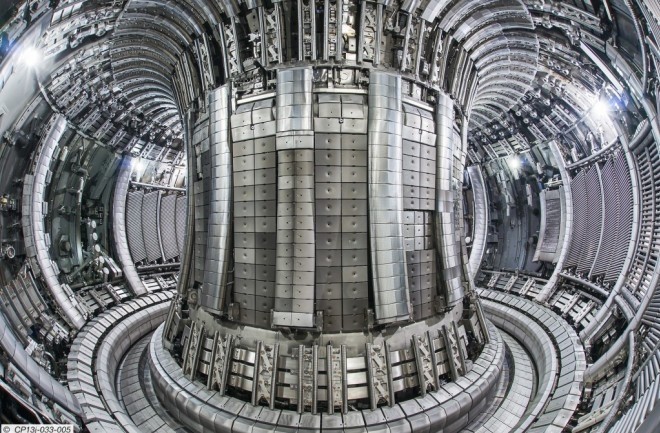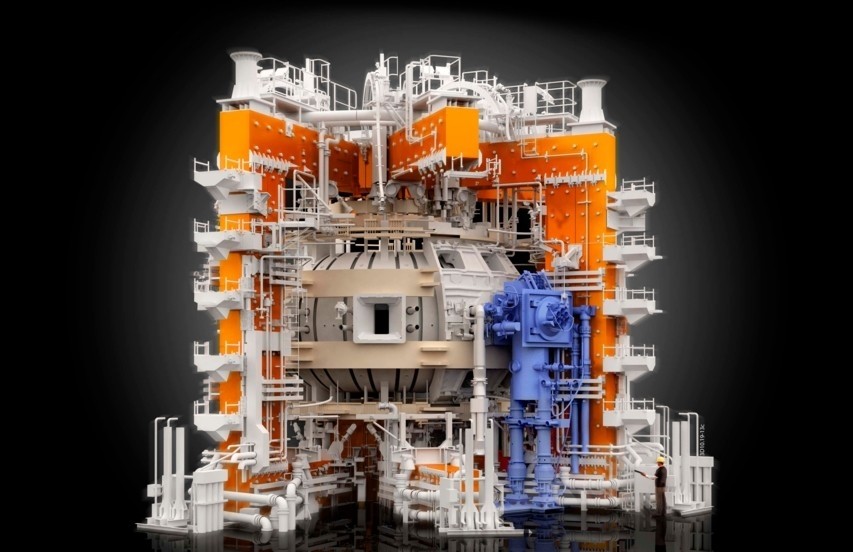Is nuclear fusion possible?
This is precisely the question voestalpine Foundry Group is addressing - in the form of a technical feasibility study in collaboration with KIT (Karlsruhe Institute of Technology) including an overall casting concept, simulation and material selection.

Nuclear fission vs nuclear fusion
In nuclear fission, a heavy element such as enriched uranium is split into medium-heavy atoms by bombardment with slow neutrons. This triggers a chain reaction in the presence of other fissile material and a moderator (water or graphite). The resulting heat can be used to generate energy using steam turbines. The disadvantages include the storage of nuclear waste, the limited availability of uranium and the potentially catastrophic consequences of an accident.
In fusion power plants, on the other hand, atomic nuclei are fused. To do this, fuel is fed into an airless, torus-shaped container and heated to temperatures between 100 and 150 million degrees Kelvin. Under these conditions, electrons and atomic nuclei become plasma. Fusion takes place when the fast atomic nuclei collide. The resulting heat is dissipated through the reactor wall and can also be used to generate electricity using steam turbines. As materials cannot withstand these high temperatures, the plasma is kept within a magnetic field. Otherwise it would cool down considerably on contact with the reactor wall and stop the fusion process.
Advantages of nuclear fusion:
- Sufficient raw materials (deuterium from water, tritium from lithium)
- No climate-damaging gases are released (CO2, NOX, CH4, etc.)
- Radioactive waste can be reused or recycled after 100 years
- No risk of a nuclear accident, as fusion stops by itself in the event of an accident
- Fusion power plants are independent of location, weather and time, unlike other renewable energies
Realization
The most promising fusion reactors at present are the tokamak reactors (Russian abbreviation for "toroidal chamber in magnetic coils") and the stellarator reactors. Based on the tokamak principle, the EUROfusion-DEMO reactor is to be put into operation in 2051 to convert thermal energy into electrical energy for the first time. According to plans, the energy generated in the plasma will be 25 times the energy required for the launch.

Opportunities for voestalpine
For precisely this DEMO reactor, which is considered the last stage before market maturity, a feasibility study was carried out with the KIT for the so-called Breeding Blanket - the key component of a fusion power plant for energy and fuel production. Segments of the "first wall" weighing around nine tons and measuring six meters in length are to be produced using cast steel. In addition to the special geometry, the components also have to withstand operating temperatures of up to 550 °C.
Overall casting concept and material selection
With the help of simulations, it was possible to determine that the "Niyama criterion" is fulfilled and that cavities only occur at the six feeders. With the measures taken, the casting supply is ensured and the design can therefore be implemented for the voestalpine Foundry Group in terms of casting technology.
To avoid inclusions and pores due to reoxidation or sand inclusions due to erosion, the mold is filled from below using 2 ladle slides ("rising casting"). Furthermore, distortion strips (stiffeners) are cast directly into the mold due to the thin wall thicknesses. These also remain on the casting for the subsequent thermal processes and prevent the component from distortion.
The material group of martensitic, high-temperature resistant 9-10% Cr steels, for which the voestalpine Foundry Group has significantly advanced the international development of cast steel components, is ideal. This enables the future use of the low-activation 9% Cr steel EUROFER97.
Whether nuclear fusion will play a role in the future energy supply remains uncertain.
However, the voestalpine Foundry Group is already equipped to guarantee a supply of cast products.
Find further information at:
KIT - PL FUSION
KIT-INR Teams - Design and Analyses of nuclear Components
Pictures: Abbildung 1, Abbildung 2
